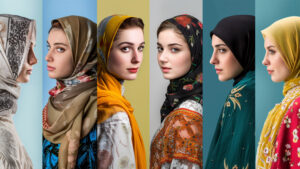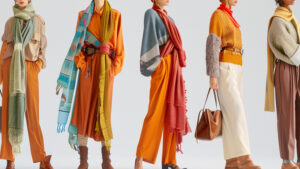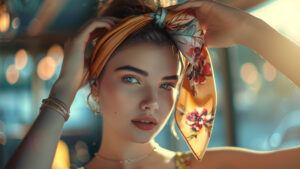
After extensive research, I've uncovered a range of trendy Muslim hijab head covers that elegantly merge tradition with modern style.
Trendy hijab head covers now feature modern cuts, vibrant colors, innovative functionality, and designer collaborations for a fresh cultural expression.
Let's examine these trends and features in detail.
What are the latest trends in Muslim hijab styles?
Current hijab styles merge classic elegance with innovative design for versatile and contemporary looks.
Modern trends feature layered textures, minimalist silhouettes, and creative draping that honor heritage while embracing change.
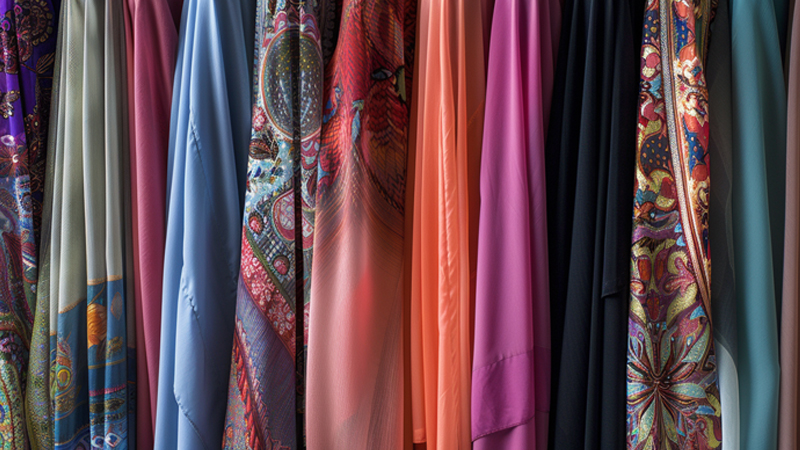
In my experience, today's hijab styles beautifully balance tradition and modernity. A significant trend is the incorporation of layered textures1, which adds depth and visual interest without compromising cultural modesty. Many women now opt for creative draping2 techniques that allow the hijab to be worn in multiple ways—from a simple, elegant wrap to a more elaborate layered headpiece. The minimalist silhouettes3 that have emerged focus on clean lines and subtle details, making the hijab not just a religious symbol but also a chic fashion statement. Designers are increasingly using lightweight, breathable fabrics that allow for comfortable wear in various climates. This evolution in style is influenced by both global fashion trends and a renewed appreciation for cultural heritage. The fusion of traditional patterns with modern cuts has resulted in hijabs that are both timeless and on-trend, providing endless possibilities for personal expression. The ability to adapt the hijab to different occasions—from casual outings to formal events—has made these styles incredibly popular among diverse audiences.
| Trend Aspect | Description |
|---|---|
| Layered Textures | Adds depth without sacrificing modesty |
| Minimalist Silhouettes | Clean, simple lines that emphasize elegance |
| Creative Draping | Multiple styling options that adapt to modern trends |
| Lightweight Fabrics | Ensure comfort and versatility across climates |
What popular colors and patterns are currently in vogue for hijabs?
I found that a mix of bold hues and classic tones, along with intricate prints, dominates current hijab fashion.
Popular choices include jewel tones, soft pastels, and classic black, accented with floral, geometric, or abstract patterns.
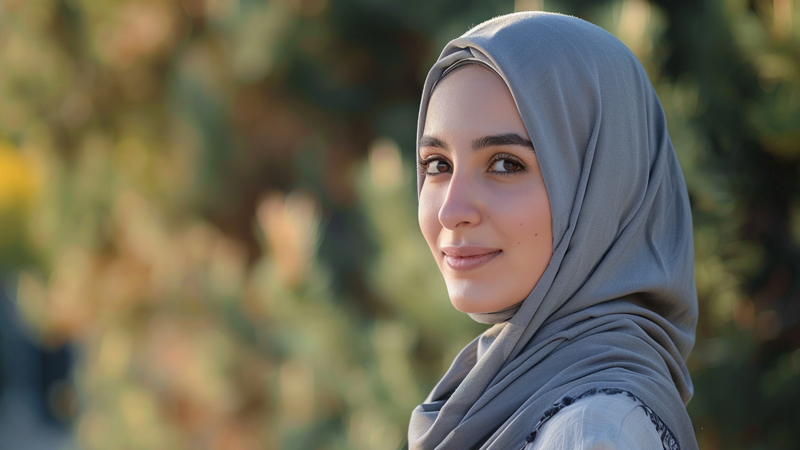
The color palette in modern hijab fashion is both diverse and expressive. In my experience, bold jewel tones like emerald, sapphire, and ruby are popular choices that make a striking statement, especially when paired with simpler outfits. These vivid colors exude confidence and sophistication. On the other hand, soft pastels and classic black remain timeless options for those who prefer subtlety and versatility. Patterns play a significant role as well; intricate floral prints evoke a sense of romance and tradition, while geometric or abstract designs offer a contemporary edge. Many designers now blend these elements, creating hijabs that incorporate both solid colors and detailed patterns. This fusion allows the hijab to be a canvas for personal expression—whether you're looking to add a pop of color to your wardrobe or maintain a minimalist, chic look. The ability to choose from a spectrum of colors and patterns ensures that every woman can find a hijab that suits her unique style.
| Color & Pattern | Description |
|---|---|
| Bold Jewel Tones4 | Striking and vibrant, ideal for statement looks |
| Soft Pastels | Delicate and versatile, perfect for subtle elegance |
| Classic Black | Timeless and sophisticated, matches any outfit |
| Intricate Prints | Floral, geometric, or abstract designs for modern flair |
What functional features do modern hijab covers offer?
Modern hijab covers offer practical features alongside style, enhancing comfort and ease of wear.
Functional aspects include moisture-wicking fabrics, adjustable fits, and integrated accessories for secure and versatile wear.
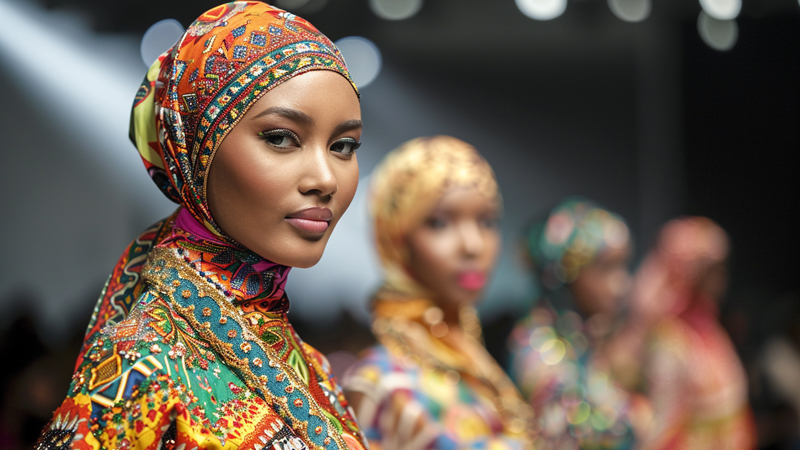
Functionality in modern hijab covers is as important as aesthetic appeal. I have noticed that contemporary hijabs are designed with practicality in mind. Many are made from high-performance fabrics that are lightweight and moisture-wicking, ensuring comfort throughout the day, even in warm weather. Adjustable features, such as elastic bands or flexible ties, allow for a customized fit, making them suitable for different head sizes and shapes. Some modern hijab designs include built-in accessories, like discreet clips or hidden pockets, which add an extra layer of convenience and style. These innovations are not just about functionality—they also enhance the overall look by keeping the scarf neatly in place, reducing the need for constant adjustment. In essence, modern hijab covers combine style with smart design, making them ideal for busy lifestyles. They are perfect for professionals, students, or anyone looking to maintain a polished appearance while enjoying comfort and ease. The integration of technology into fabric design also means that these hijabs are more durable and easier to maintain than ever before.
| Functional Feature | Benefit |
|---|---|
| Moisture-Wicking Fabric | Keeps you cool and comfortable |
| Adjustable Fit | Ensures a secure, personalized wearing experience |
| Integrated Accessories | Adds convenience and enhances overall style |
| Durable Design | Offers long-lasting quality with minimal maintenance |
Which designers are influential in the current hijab fashion scene?
I discovered that innovative designers are reshaping hijab fashion5 with fresh, culturally inspired collections.
Leading designers blend tradition with modernity, creating hijab collections that resonate globally and redefine modest fashion.

The landscape of hijab fashion is vibrant and evolving, thanks to influential designers who are merging cultural heritage with modern aesthetics. I've observed that some designers focus on reinventing traditional patterns, using bold colors and innovative fabrics to give hijabs a contemporary twist. Their collections often feature a mix of classic silhouettes and avant-garde details, appealing to a diverse audience from different cultural backgrounds. These designers emphasize quality craftsmanship and sustainability, ensuring that each piece is not only stylish but also ethically produced. Their work has sparked trends that are embraced both locally and globally, influencing the overall direction of modest fashion6.
In my wardrobe, I particularly appreciate brands that offer a blend of luxury and practicality. Designers who use high-quality materials, such as silk and high-performance blends, create hijabs that are both elegant and functional. These collections are showcased in fashion weeks and on social media platforms, gaining international recognition and inspiring countless style enthusiasts. This influence has led to a broader acceptance of hijab fashion in mainstream markets, with innovative designs that cater to modern tastes while respecting tradition.
| Designer Influence | Notable Contribution |
|---|---|
| Cultural Reinterpretation | Blends traditional motifs with modern design elements |
| Sustainable Fashion | Focus on ethical production and high-quality materials |
| Global Outreach | Expands modest fashion to international markets |
| Innovation in Fabric | Incorporates cutting-edge fabrics for enhanced comfort and style |
Conclusion
Innovative design, superior functionality, and cultural fusion define the best modern hijab head covers.
-
Explore this link to discover how layered textures can enhance your hijab style with depth and elegance. ↩
-
Learn about innovative draping techniques that can transform your hijab into a versatile fashion statement. ↩
-
This resource will provide insights into how minimalist silhouettes can elevate your hijab looks with simplicity and sophistication. ↩
-
Explore the significance of bold jewel tones in hijab fashion and how they can elevate your style. ↩
-
Explore the latest trends in hijab fashion to see how designers are innovating and reshaping this vibrant industry. ↩
-
Discover how modest fashion is evolving and gaining acceptance in mainstream markets, reflecting cultural diversity and modern aesthetics. ↩

